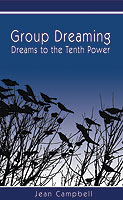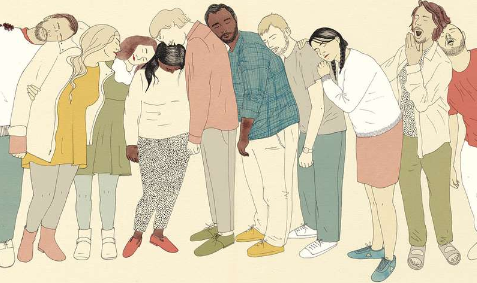Group Dreaming: Dreams to the Tenth Power

This book reports on the results of various group dreaming experiments undertaken by the author throughout her long career as a dream researcher. At the same time, she reviews much of the dream research that had been going on up until the time of writing, which I found to be very valuable; many of the institutions and organizations she discussed are still alive and active today. “Group dreaming” can be loosely defined as any attempt by 2 or more people to meet or find each other in the subtle realm and report on the experience upon waking.
She opens the book by taking us through her early group dreaming experiments where she set up 2 teams of 10 people and instructed them to try to meet at specific locations at the same time. There were varying levels of success between the teams and between individuals, but it became rapidly apparent that meeting others in dreams absolutely is possible and does happen. But because of the nature of dreams, it’s not always obvious and straight forward to recognize that it did, indeed, happen. While she was piecing together the reports of the experimental subjects, it emerged that things don’t always happen in chrono-linear order. People sometimes reported things that didn’t end up happening in the physical world until a later date. In other words, not only could people from other ends of the Earth meet and be in the same place at the same time, but they could also see things that hadn’t yet happened on the physical plane. This was the biggest nugget of insight I gained from this part of the book: the subtle realm doesn’t play by the same rules of time and space that we’re used to in the physical world.
Soon enough, a very penetrating question emerged from many of the participants of the experiments: “If I am seeing real individuals in my dreams, and they look and act like every other character I’ve seen in my dreams throughout my life, then is it possible that those other people/characters from my other dreams are not merely creations of my subconscious, but true, autonomous individuals?” This question is one I still think about today. Which of the people in my dreams are real and which are my own creations?
What inspired me the most about this book is how the author crated an online platform for people across the world to connect and share their subtle realm experiences with one another. Through this platform people engaged and supported one another in dream cultivation during their waking hours. Their subtle realm experiences soon began responding with greater insights, hints, suggestions, inspirations, and even warnings for their waking life. In this way, the waking and dreaming lives of the participants began to merge into one and their lives became fuller, richer, and a more complete whole as a result. Whether they found themselves in their physical body during the day or in their subtle body during the night, they were more fully alive and present.
One critique I have of the book is that it got very anecdotal at the end with the author recounting far too many dreams from experiment participants without making her points very clear. I found it difficult to find the point she was trying to make. Yet, I understand that the very nature of dreams makes the careful, controlled experimentation required for testing scientific theories pretty much impossible. In the end, all of the stories helped to inspire me to keep dreaming big.

